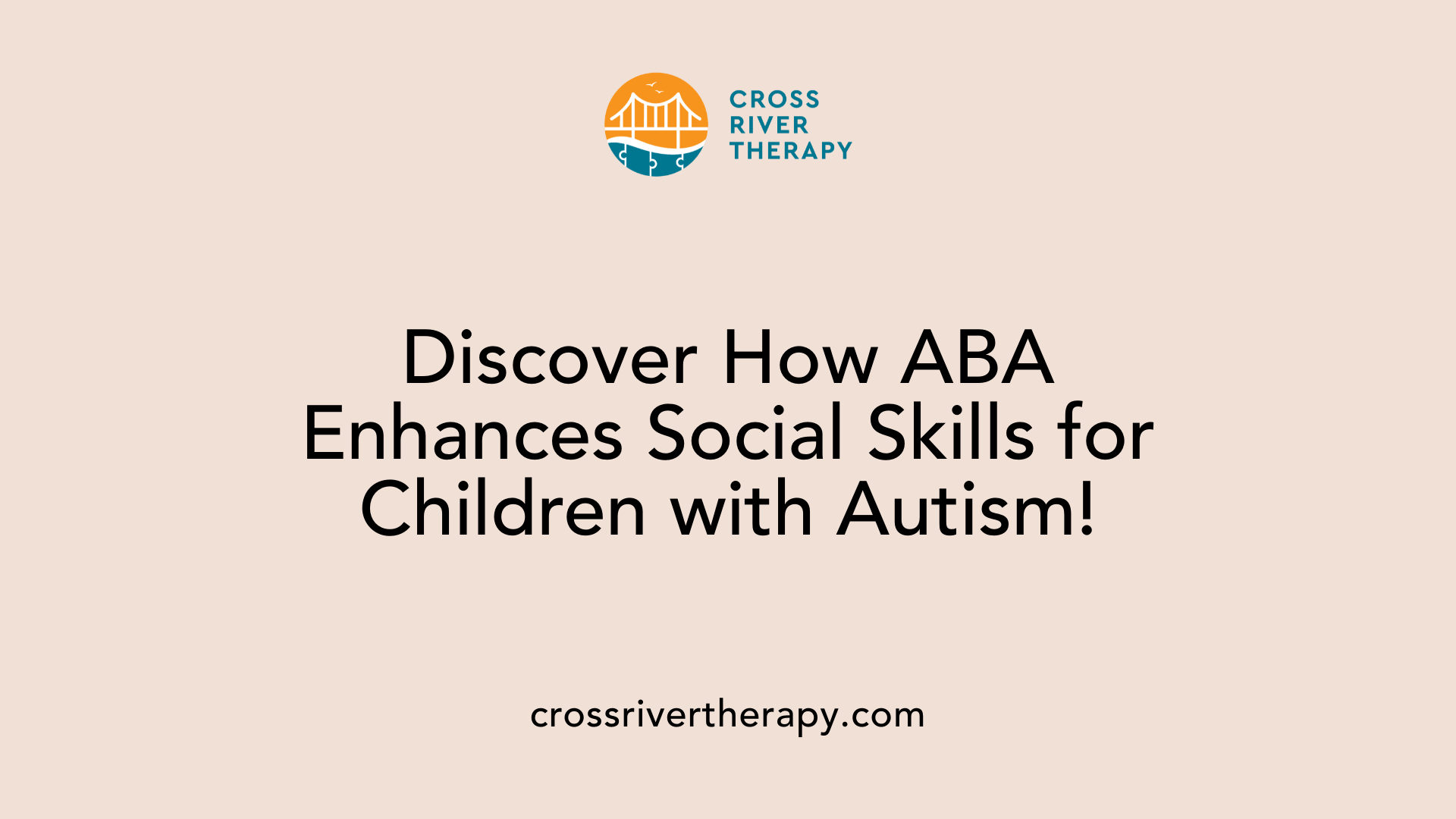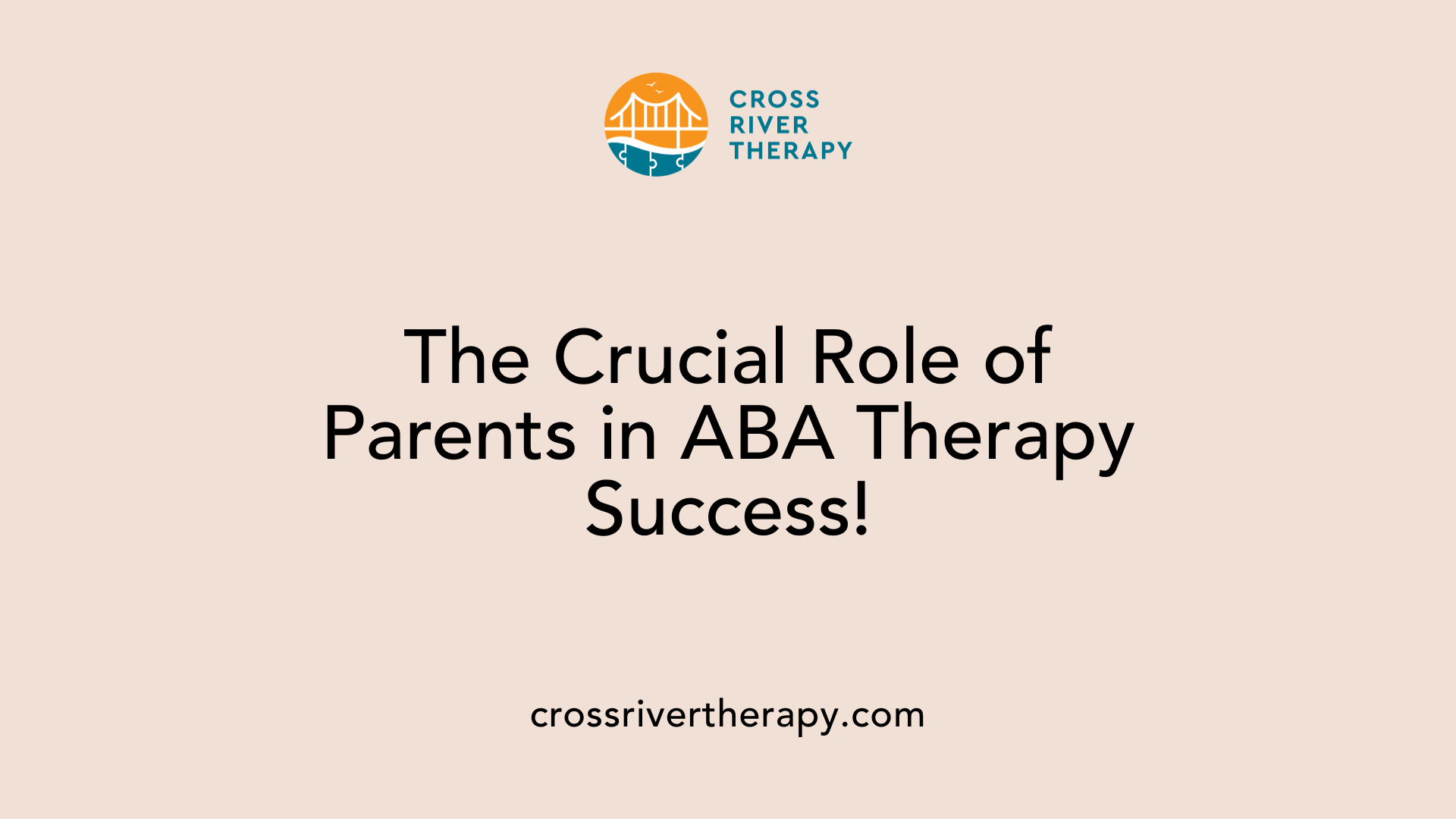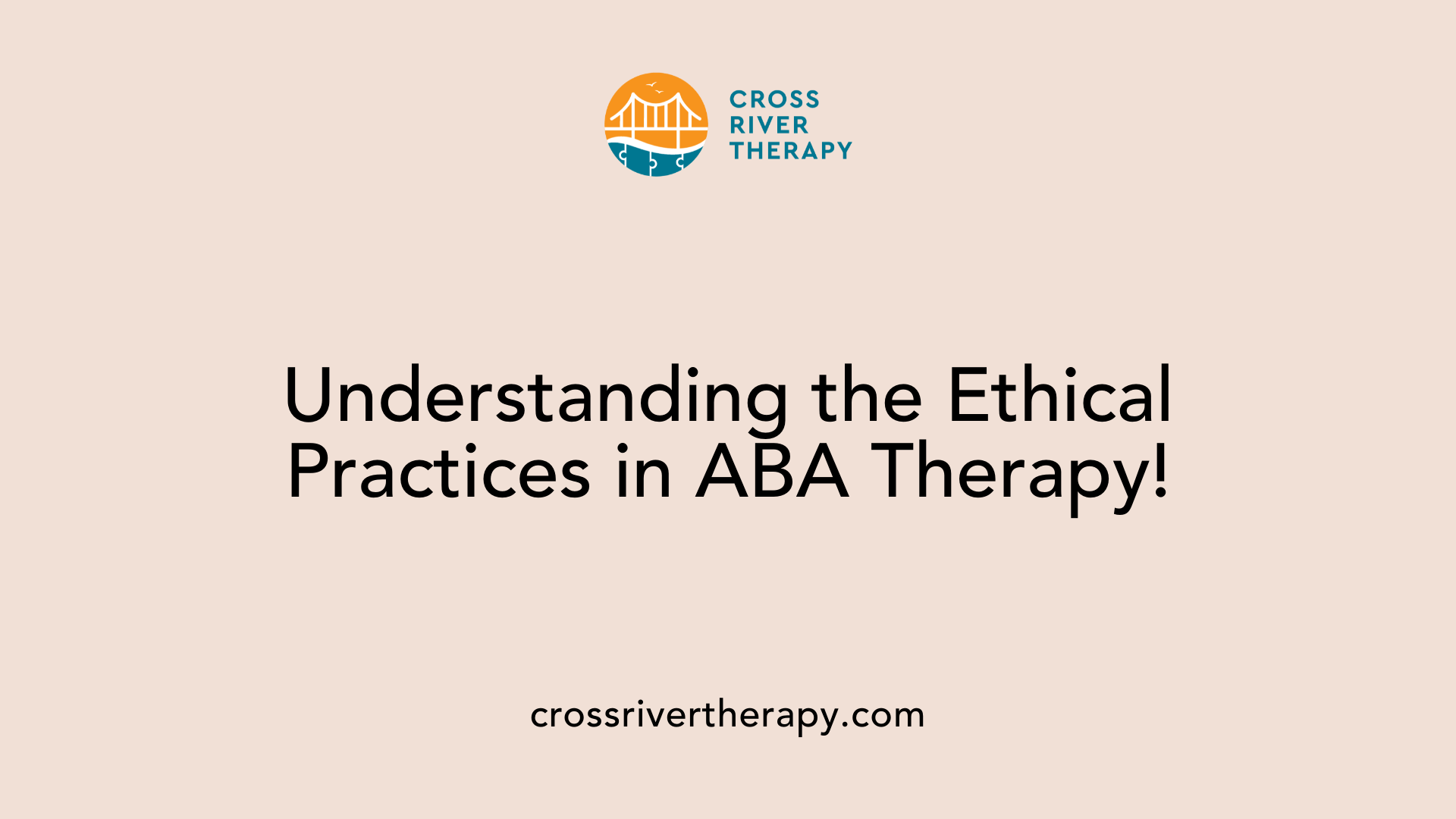How ABA Therapy Enhances Child Behavior in Community Settings
Unlocking Potential: ABA Therapy's Role in Community Integration for Children with Autism
Exploring the Community Benefits of ABA Therapy
Applied Behavior Analysis (ABA) therapy has long been celebrated for its transformative effects on children with Autism Spectrum Disorder (ASD). Beyond its application in clinical settings, ABA therapy is proving to be a vital tool for enhancing child behavior in diverse community settings. This article delves into the methodologies and impacts of ABA therapy, offering insights into how it supports social skills, communication, and overall quality of life for children in everyday environments.
Common Techniques in ABA Therapy

What are common techniques used in Applied Behavior Analysis (ABA) therapy?
Applied Behavior Analysis (ABA) employs a variety of techniques designed to enhance learning and promote positive behavior, particularly for children with Autism Spectrum Disorder (ASD). Here are some of the most commonly used techniques:
Positive Reinforcement Techniques
Positive reinforcement is vital in ABA therapy. It involves rewarding children for exhibiting desirable behaviors, which encourages the repetition of these behaviors in the future. Rewards can include praise, tokens, or social reinforcements like compliments. This method not only increases desired actions but also boosts the child's confidence.
Discrete Trial Training (DTT)
DTT is a structured teaching technique that breaks learning tasks into small, manageable steps. Each "trial" involves a clear antecedent (instruction), a behavior (response), and a consequence (reward or feedback). This systematic approach helps children learn complex skills progressively, reinforcing each component effectively.
Antecedent-Behavior-Consequence (ABC) Model
The ABC model is a fundamental component of ABA that analyzes behaviors by identifying the antecedents (triggers), the behaviors themselves, and the consequences that follow those behaviors. Understanding these relationships allows therapists to modify behaviors by changing triggers or consequences.
Functional Communication Training (FCT)
FCT teaches children how to communicate their needs effectively, replacing challenging behaviors with appropriate communication skills. By focusing on the functional aspects of communication, children learn to express themselves more clearly, reducing frustration and improving relationships with peers and caregivers.
The integration of these techniques within ABA programs helps foster essential skills, ultimately enhancing the child's adaptation and quality of life in various settings.
Impact of ABA on Social Skills of Children with Autism

How does ABA therapy benefit children with autism in improving their social skills?
ABA therapy plays a significant role in improving social skills for children with autism. This is achieved through well-structured techniques that prioritize increasing positive behaviors while minimizing harmful ones.
Tailored Social Skill Programs
Programs designed under ABA are tailored to meet each child's unique needs. This customization ensures that the interventions effectively address individual social challenges. Techniques often involve direct teaching of essential social skills during both one-on-one sessions and group interactions.
For instance, children engage in role-playing exercises where they practice scenarios that help them recognize social cues and enhance conversational skills. This repetitive practice builds confidence and self-esteem, allowing children to interact more successfully in various environments.
Intensive and Long-Term Effects on Interaction Skills
Research supports that intensive and long-term application of ABA leads to considerable enhancements in communication and interpersonal skills. With consistent therapy, children learn not just basic requests but also complex skills such as conflict resolution and emotional regulation.
Moreover, tailored ABA interventions help children understand nonverbal communication, contributing significantly to their ability to interact effectively with peers. In conclusion, the focused approach of ABA therapy ultimately leads to improved social competence and emotional health, fostering meaningful relationships for children with autism.
Adapting ABA Therapy Beyond Traditional Settings
Can ABA therapy be effectively applied outside of traditional therapy environments?
Yes, ABA therapy can be effectively applied in various settings beyond traditional therapy rooms. This can include environments like homes, schools, and community spaces. The adaptability of ABA is a cornerstone of its effectiveness.
Naturalistic Teaching Methods
Naturalistic Teaching Methods (NTM) are fundamental in bridging the gap between therapy and real life. Techniques such as Pivotal Response Treatment emphasize critical behaviors that can lead to widespread improvements in a child's engagement and learning. These approaches make use of everyday activities to teach skills, embedding ABA principles directly into daily routines, which allows for practical application of learned behaviors.
Integration into Community Contexts
Furthermore, the Verbal Behavior Approach and the Early Start Denver Model are designed to integrate communication skills within naturalistic settings, tailoring interventions to meet the unique needs of children with Autism Spectrum Disorder (ASD). In these contexts, children can learn to apply their skills in real-time, significantly enhancing their social interaction abilities and overall adaptability.
Flexibility and Adaptability of ABA Approaches
The flexibility of ABA therapy extends to the methods used in these various environments, employing positive reinforcement and structured instructional plans that cater to each child's unique behaviors and learning preferences. Whether it’s through role-playing exercises or peer interaction in group sessions, ABA therapy can incorporate a range of techniques that fit into the child's daily life.
By utilizing these strategies, ABA not only intends to modify behaviors but also aims to enrich a child's overall quality of life, making it a versatile and valuable approach for supporting children with ASD.
Long-Term Impacts of ABA on Children’s Behaviors
What long-term impacts can ABA therapy have on children's behavior?
The long-term impacts of Applied Behavior Analysis (ABA) therapy on children's behavior can present a mixed picture. While many children show significant advancements in areas like communication skills, social interactions, adaptive behavior, and academic readiness, it is vital to consider the broader implications of sustained ABA interventions.
Research indicates that successful ABA programs often lead to notable improvements, with children enhancing their ability to communicate effectively and navigate social settings. Long-term studies suggest that these children can develop better self-regulation skills, contributing to a more balanced emotional well-being. However, feelings of stress or anxiety related to the therapy can manifest in some individuals, particularly if they feel pressured to conform to societal norms.
Efficacy and ethical considerations
The efficacy of ABA therapy is often debated among professionals and families. While numerous studies show that intensive ABA therapy often benefits children with Autism Spectrum Disorder (ASD), concerns about its ethical implications cannot be ignored. Some critics argue that the approach might inadvertently suppress natural behaviors, leading to negative emotional consequences, including increased anxiety or potential PTSD symptoms in extreme cases. The one-size-fits-all strategy is seen as a particular issue, as it may not meet the unique needs of every child, which could ultimately result in harm rather than positive progress.
Tailored approaches and individual needs
Given the variety in children's responses to ABA, it becomes clear that a tailored approach is essential. Individualized treatment plans, designed to take into account each child's strengths, weaknesses, and specific learning styles, can maximize the positive outcomes of ABA therapy. Parental involvement, parental education, and behavioral assessments are crucial in ensuring that the therapy consistently meets these individual needs. By fostering a support system that emphasizes both behavior modification and emotional well-being, ABA can be implemented in a way that prioritizes the child's holistic development.
The continued evaluation of long-term impacts is necessary to enhance the effectiveness of ABA, ensuring it promotes the overall quality of life for children with ASD.
ABA's Role in Supporting Academic Readiness
How does ABA therapy support academic readiness in children?
ABA therapy plays a significant role in preparing children with Autism Spectrum Disorder (ASD) for success in academic settings. Central to this is the development of foundational skills. Children learn essential communication skills that allow them to express their needs and participate actively in classroom discussions. This foundational communication helps reduce frustration and enhances relationships with peers and educators.
Additionally, social interaction is a key focus area in ABA therapy. Through structured programs, children are trained to engage in group activities, understand social cues, and manage interactions effectively. For instance, role-playing exercises help children rehearse social situations they may encounter in school, fostering confidence and improving their social adaptability.
Why is parental involvement important?
Parental involvement is crucial in the success of ABA therapy. Programs encourage active engagement from parents, who receive training to reinforce behavioral principles at home. This continuity ensures that skills learned during therapy are practiced outside of formal sessions, making it easier for children to generalize these skills in different settings, including school.
How do collaborations with educational institutions enhance outcomes?
Collaboration with schools is another vital component. When ABA therapists work closely with teachers and school staff, they can tailor interventions that align with the educational goals and routines in the classroom. This teamwork helps create a cohesive learning environment where children can apply their skills effectively.
In summary, ABA therapy supports academic readiness by enhancing communication, social skills, and emotional regulation, actively involving parents, and partnering with educational institutions. Together, these strategies ensure that children with ASD are well-equipped to face academic challenges.
Enhancing Social Interactions Through ABA Therapy
Role-Playing and Rehearsal Techniques
ABA therapy employs role-playing exercises that allow children to rehearse various social scenarios. These exercises help children practice responses, recognize social cues, and build conversational skills, providing a safe environment to develop confidence and self-esteem. By engaging in constructive role-play, children learn to navigate real-life interactions more effectively.
Teaching Nonverbal Communication Skills
Understanding nonverbal cues is crucial for successful interactions. ABA therapy focuses on teaching children how to interpret body language and facial expressions. These skills are essential for recognizing emotions in others and responding appropriately, enhancing their ability to connect socially.
Building Friendships and Social Networks
Group sessions in ABA create opportunities for peer interaction that are vital for friendship development. Children practice social skills in real-time, helping them form bonds and navigate social settings. This peer engagement is instrumental in building a supportive network, enabling children with autism to enrich their social experiences and foster meaningful relationships.
| Technique | Purpose | Impact |
|---|---|---|
| Role-playing | To practice social scenarios | Builds confidence and communication skills |
| Nonverbal cues training | To interpret body language | Enhances understanding and response accuracy |
| Group sessions | To facilitate peer interaction | Strengthens friendships and social networks |
ABA therapy not only improves individual social skills but also boosts children’s overall quality of life by promoting happier social interactions.
Improving Communication Capabilities with ABA
Breaking Down Communication into Manageable Steps
Applied Behavior Analysis (ABA) excels at improving communication abilities in children with Autism Spectrum Disorder (ASD) by deconstructing the complexity of language. The therapy simplifies communication into smaller, manageable components. This systematic approach allows children to express their needs and emotions more effectively, minimizing frustration.
Using Functional Communication Training
One of the prominent techniques employed in ABA is Functional Communication Training (FCT), which focuses on teaching children how to communicate their needs more appropriately. By providing them with practical strategies for expressing themselves, ABA fosters essential communication skills that facilitate better interactions with peers and caregivers alike.
Enhancing Emotional Expression and Reducing Frustration
ABA therapy also plays a significant role in enhancing a child’s ability to identify and express emotions. By teaching children to recognize their feelings and articulate them effectively, ABA helps reduce instances of challenging behaviors like tantrums. Additionally, this emotional awareness contributes to stronger relationships and improved social skills, paving the way for more positive interactions.
| Communication Skill | ABA Approach | Outcome |
|---|---|---|
| Breaking down language | Step-by-step learning | Effective expression of needs and emotions |
| Functional Communication Training | Practical strategies | Improved communication with peers and caregivers |
| Enhancing emotional expression | Recognition and articulation | Reduced frustration and stronger relationships |
ABA therapy's well-structured techniques ensure that improvements in communication capabilities lead to a higher quality of life for children with ASD.
Parental Involvement in ABA Therapy

Training Parents to Reinforce ABA Strategies
Parental involvement is critical in the success of Applied Behavior Analysis (ABA) therapy. Parents are often trained in ABA principles and techniques, equipping them with the skills needed to reinforce strategies at home. This training encourages families to become active participants in their child's progress, ensuring that the interventions learned during therapy are consistently applied in the home environment.
Consistency in Behavior Management at Home
For ABA therapy to be effective, consistency is essential. When parents use the same reinforcement and behavior management techniques that are implemented in therapy sessions, it creates a coherent learning environment for the child. This consistency not only solidifies the skills learned but also promotes the generalization of these skills across different settings.
Parental Influence on Therapy Outcomes
The involvement of parents significantly influences therapy outcomes. Research indicates that children whose parents actively participate in their therapy demonstrate higher levels of skill acquisition and better emotional well-being. Moreover, parental support helps to enhance the child's confidence and autonomy, resulting in improved integration into community settings.
| Aspect | Importance | Impact on Child Outcomes |
|---|---|---|
| Training of Parents | Provides skills to reinforce ABA strategies | Improves consistency and effectiveness |
| Consistency | Ensures the same behavior management techniques | Enhances skill generalization and interaction success |
| Parental Influence | Directly correlates with therapy effectiveness | Boosts child's confidence and social integration |
Engaged and informed parents are fundamental in maximizing the benefits of ABA therapy, fostering a supportive environment for their child's development.
Group Sessions: Practicing Social Skills in Real-Time
Peer Interactions and Real-Time Learning
Group sessions in Applied Behavior Analysis (ABA) therapy provide children a unique opportunity to engage with their peers in a controlled environment. These interactions serve as practical platforms where children can experiment with the social skills they are acquiring. By practicing these skills in real-time, they learn essential concepts like sharing, turn-taking, and understanding social cues, all of which are crucial for successful peer relationships.
Role of Group Sessions in Social Skills Development
In a group setting, children can rehearse various social scenarios through role-playing exercises. This form of practice enables them to recognize and interpret social cues, enhancing their ability to engage in conversations. Additionally, group sessions promote a sense of camaraderie among children, helping them feel more at ease as they navigate social settings, consequently reinforcing community integration.
Building Confidence and Reducing Social Anxiety
One of the significant benefits of group sessions is their impact on children's self-esteem and anxiety levels. As children interact with peers, they gain confidence in their ability to communicate and forge relationships. By gradually exposing them to group interactions, ABA therapy helps reduce social anxiety, equipping children to handle social situations more effectively. Through consistent and supportive engagement, these sessions foster independence and encourage children to step outside their comfort zones.
Overcoming Challenges and Building Confidence
Techniques to reduce anxiety in social settings
ABA therapy employs various approaches to help children manage social anxiety. Therapists implement gradual exposure techniques, allowing children to face social interactions in controlled steps. This strategy helps children build tolerance, as they become accustomed to engaging with peers in low-pressure environments.
Gradual introduction to social situations
During sessions, children practice through role-playing exercises that simulate real-world scenarios. These tailored practices enable them to rehearse responses, recognize social cues, and develop conversational skills in a safe setting. This gradual introduction not only mitigates anxiety but fosters familiarity, which is vital for building confidence.
Emphasis on self-esteem and autonomy
Confidence is enhanced through positive reinforcement, where children are rewarded for demonstrating desired social behaviors. By regularly praising small accomplishments, therapists encourage children to repeat these actions in future interactions. This not only builds self-esteem but also empowers children to navigate social environments independently, fostering greater autonomy in their daily lives.
Adaptive Behavior and Quality of Life Improvements

Development of adaptive behavior skills
Applied Behavior Analysis (ABA) is instrumental in cultivating adaptive behavior skills among children with Autism Spectrum Disorder (ASD). These skills enable children to perform essential daily tasks, such as personal hygiene, dining etiquette, and managing personal belongings. By employing structured techniques to break down these tasks into manageable steps, ABA therapy facilitates gradual learning and fosters independence.
Improving daily living activities
As children engage in ABA therapy, they learn to navigate various daily living activities more effectively. The use of positive reinforcement encourages children to practice these skills consistently. As a result, children not only gain confidence but also experience reduced frustration in their day-to-day interactions, enhancing their overall quality of life.
Ensuring long-term integration and success
For children to thrive, it’s vital that the skills learned through ABA transfer to community settings. Natural Environment Teaching (NET) strategically reinforces learned behaviors in real-world settings, leading to smoother integration into homes, schools, and social environments. Involvement of parents further strengthens this process, ensuring consistency and support as children adapt to their surroundings. This holistic approach ultimately promotes self-reliance, enriching the quality of life and paving the way for future opportunities.
Tailoring ABA Interventions: The Importance of Individualized Plans
Creating Personalized Treatment Plans
Individualized plans are essential in Applied Behavior Analysis (ABA) therapy, catering to the unique needs of each child with Autism Spectrum Disorder (ASD). These tailored interventions are designed after thorough assessments of the child’s strengths, challenges, and specific behavioral issues. By considering these factors, therapists can develop effective strategies that enhance the child's learning and social skills.
Assessment of Individual Strengths and Challenges
Behavioral assessments play a pivotal role in shaping the direction of ABA therapy. They help identify target behaviors that need addressing and allow for the monitoring of progress over time. This systematic approach ensures that therapy aligns with the child's specific needs, which is especially crucial given that children with ASD can vary widely in their abilities and challenges.
Optimizing Outcomes Through Customized Approaches
ABA interventions are not one-size-fits-all; they require adaptability. Customized approaches not only enhance the effectiveness of the therapy but also improve children's overall quality of life. When children receive support tailored to their individual requirements, they are more likely to succeed in social interactions, communication, and daily living activities, ultimately promoting greater independence and integration into community settings.
Comprehensive Overview of Individualized ABA Treatment Plans
| Feature | Importance | Benefit |
|---|---|---|
| Personalized Assessment | Identifies unique strengths and challenges | Customizes interventions |
| Tailored Treatment Plans | Addresses specific behavioral needs | Increases effectiveness of therapy |
| Ongoing Monitoring | Tracks progress over time | Adjusts strategies for better outcomes |
| Focus on Individual Learning Styles | Maximizes child engagement and understanding | Ensures effective learning and retention |
Using Positive Reinforcement for Behavioral Change
Encouraging Repetition of Desirable Behaviors
Positive reinforcement plays an essential role in Applied Behavior Analysis (ABA) therapy. By rewarding children for displaying positive behaviors, ABA helps reinforce these actions, encouraging them to repeat desirable behaviors in the future. This approach not only solidifies learned skills but also boosts children's confidence as they experience success in their interactions.
Techniques Like Token Systems and Social Reinforcements
Various techniques are employed in ABA to implement positive reinforcement effectively. Token systems offer children tangible rewards for achieving specific goals, creating a structured way for them to visualize their progress. Additionally, social reinforcements such as praise and compliments enhance motivation and self-esteem, encouraging children to engage positively with others.
Supporting Development of Communication and Problem-Solving Skills
Through positive reinforcement, ABA therapy aids in the development of critical communication and problem-solving skills. When children are rewarded for expressing their needs or successfully navigating social situations, they learn to articulate their thoughts and feelings more effectively. This not only enhances their emotional expression but also fosters better peer relationships, equipping them with the tools necessary for daily life interactions.
| ABA Techniques | Description | Impact on Skills |
|---|---|---|
| Positive Reinforcement | Rewarding desired behaviors to encourage repetition | Boosts confidence and encourages learning |
| Token Systems | Tangible rewards for meeting specific goals | Visualizes progress and engages children |
| Social Reinforcements | Praise and compliments that motivate children | Enhances emotional expression and relationships |
Generalization of Skills Across Various Settings
Implementing Skills at Home, School, and Community
One of the primary goals of Applied Behavior Analysis (ABA) therapy is the generalization of skills across various settings, such as home, school, and community environments. This means that children with Autism Spectrum Disorder (ASD) learn not just in a controlled clinical setting but carry those skills into their everyday lives. For example, skills taught during therapy sessions—including language use, social interactions, and self-regulation—are practiced at home with family members, in school with teachers and peers, and in broader community settings.
Promoting Adaptability and Independence
While children practice these skills, ABA therapy fosters adaptability, helping them transition smoothly between different environments. Individualized treatment plans consider each child’s unique needs, focusing on teaching vital life skills. As children master daily living tasks, they gain independence, which contributes to improving their overall confidence and reduces reliance on caregivers.
Ensuring Smooth Integration into Social and Academic Contexts
Effective ABA programs encourage the integration of learned behaviors into academic and social situations. For example, through Natural Environment Teaching (NET), children can apply what they’ve learned in settings that mimic real-life scenarios. Consequently, social skills such as sharing, turn-taking, and conversation allow children to engage meaningfully with peers, paving the way for better relationships and enhancing their quality of life.
Ensuring Ethical and Effective ABA Practices

Addressing Concerns and Criticisms
While Applied Behavior Analysis (ABA) therapy has shown effectiveness in improving the skills of children with Autism Spectrum Disorder (ASD), it is essential to address various concerns and criticisms associated with its application. Notably, the ethical considerations surrounding the methods utilized are important to ensure the practice remains supportive rather than punitive. Critics often point to the need for proper training and oversight to avoid the misuse of techniques that could harm rather than help.
Prioritizing the Child's Well-Being
An ethical ABA program prioritizes the well-being of the child above all else. This approach includes creating individualized treatment plans that respect each child's unique strengths and challenges. Programs that engage parents in the process not only enhance efficacy but also ensure that the interventions are consistent across environments like home, school, and community, thereby safeguarding the child's emotional health and development.
Evaluating ABA Therapy's Impact on Emotional Health
Evaluating the long-term impacts of ABA therapy on emotional health is vital. Studies should measure not just behavioral improvements but also assess emotional well-being, self-esteem, and the child's ability to navigate social situations. Techniques within ABA are designed to foster independence and enhance quality of life, yet ongoing evaluation is essential to ensure these goals align with the child’s emotional and social development needs.
| Ethical Considerations | Importance | Actions Required |
|---|---|---|
| Child's Well-Being | Central to ABA practice | Individualized treatment plans |
| Parental Involvement | Ensures consistency | Training for parents to reinforce principles |
| Long-Term Emotional Impact | Measures success holistically | Regular assessments and adjustments to plans |
The Transformative Power of ABA in Community Settings
ABA therapy offers a comprehensive framework for helping children with autism integrate into community settings effectively. By focusing on individual needs and adapting to various environments, ABA not only improves children's behavior but also enhances their quality of life. As society continues to embrace inclusivity, ABA therapy remains a pivotal tool in shaping a brighter future for children on the autism spectrum, ensuring they receive the support they need to thrive in all facets of life.
References
- Applied Behavior Analysis in Children and Youth with Autism ...
- How ABA Therapy Enhances Social Skills in Children with ASD
- ABA Therapy: A Path to Independence for Children with Autism
- 7 Surprising Benefits of ABA Therapy for Kids You Need to Know
- When Choosing an ABA Therapy Program?
- Is ABA therapy harmful? The controversy explained
- Long-term ABA Therapy Is Abusive: A Response to Gorycki, Ruppel ...



